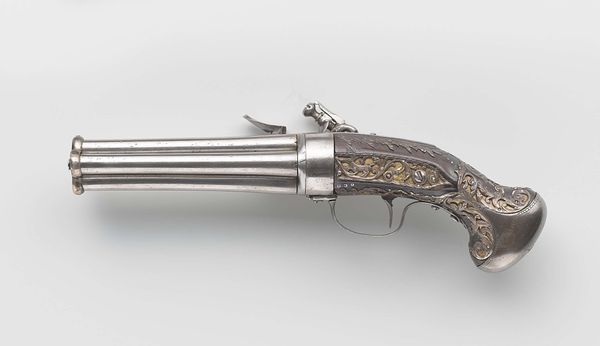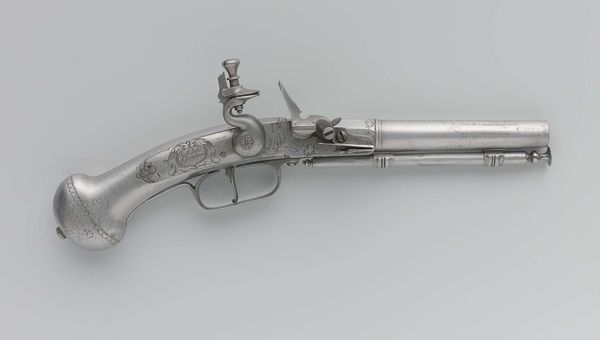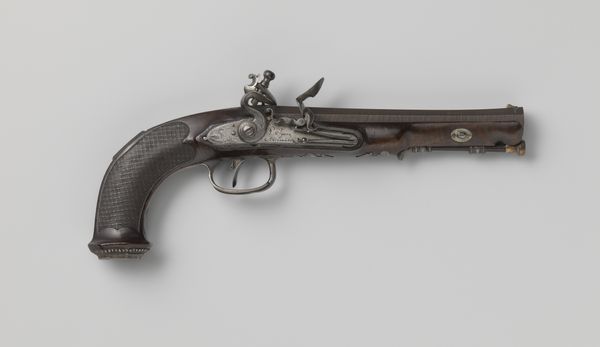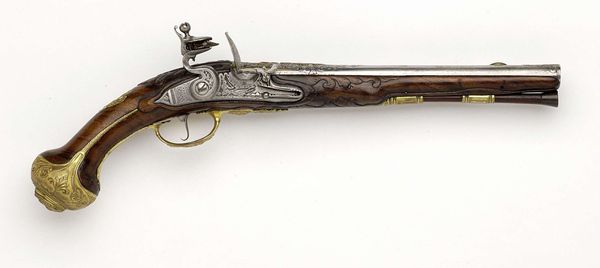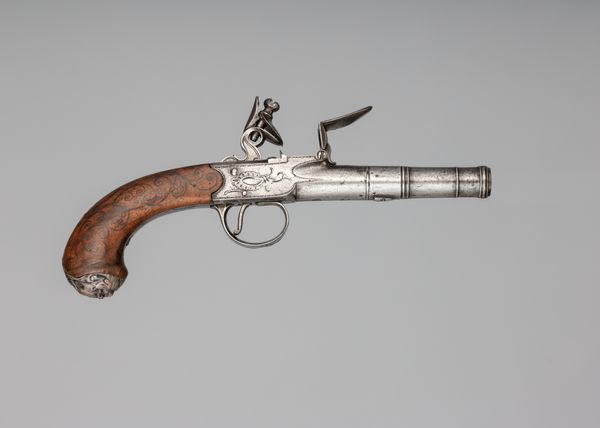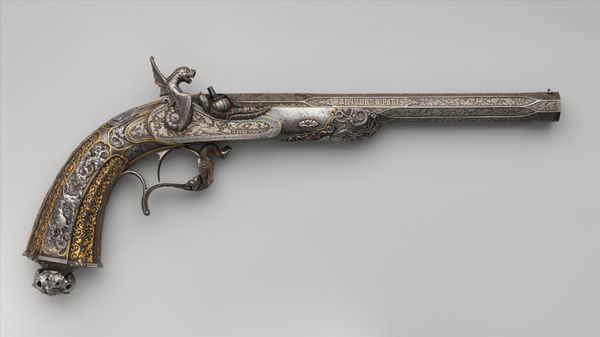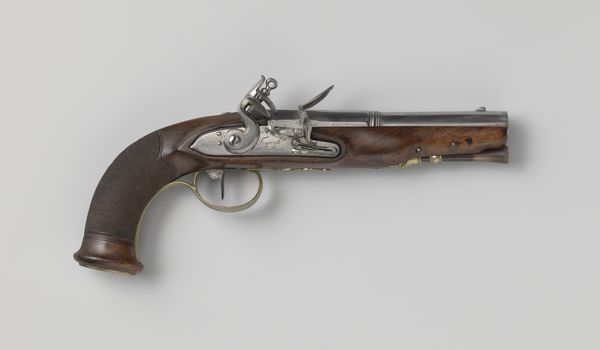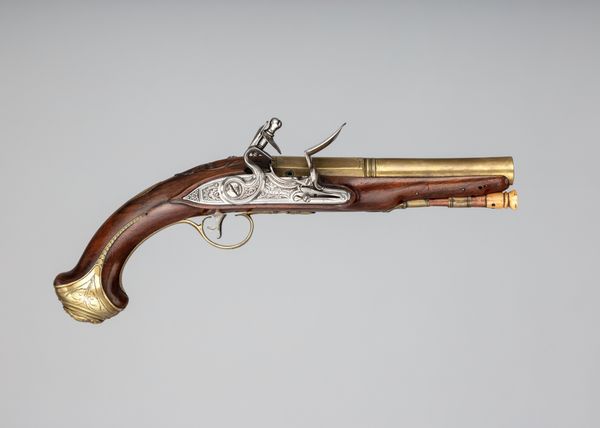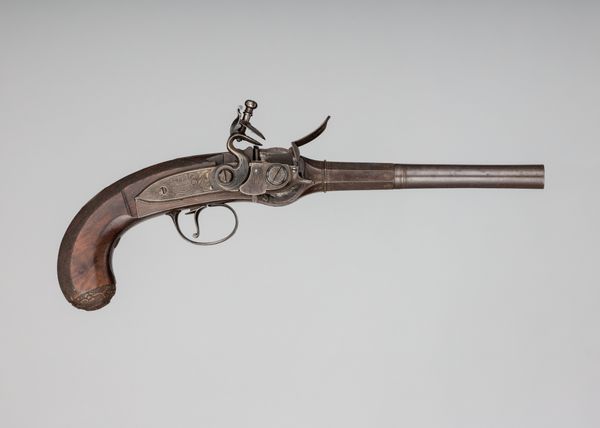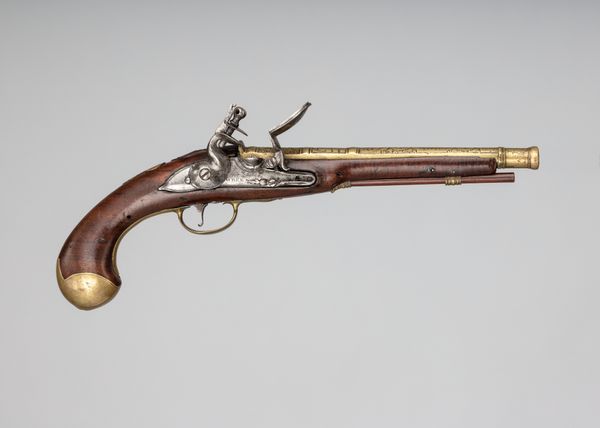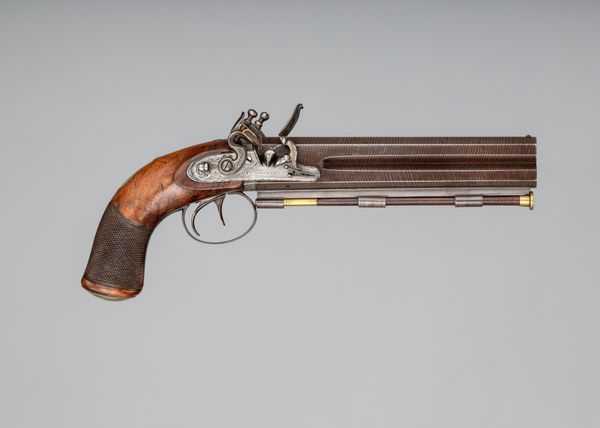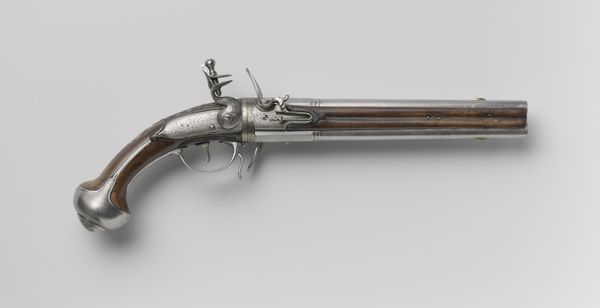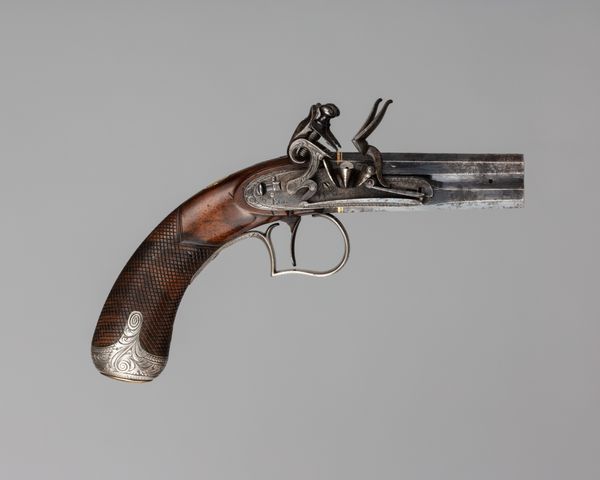
Flintlock Repeating Pistol with Lorenzoni Action, Bearing the Crests of Vice Admiral Horatio Nelson (1758–1805), with Case and Accessories 1773 - 1819
0:00
0:00
metal
#
historical design
#
weapon
#
metal
#
england
#
history-painting
Dimensions: Pistol (a): L. 14 1/2 in. (36.8 cm); L. of barrel 6 in. (15.2 cm); Cal. .55 in. (14 mm); Wt. 3 lb. 15 oz. (1786 g); reserve barrel (b): L. 6 1/8 in. (15.6 cm); Wt. 14.4 oz. (408.2 g); bullet mould (c): L. 5 3/8 in. (13.7 cm); Wt. 2.6 oz. (73.7 g); punch (d): L. 5 1/2 in. (14 cm); Wt. 4.4 oz. (124.7 g); wrench (e): L. 3 3/4 in. (9.5 cm); Wt. 1.6 oz. (45.4 g); case (f): H. 4 1/8 in. (10.5 cm); W. 15 9/16 in. (39.5 cm); D. 7 5/8 in. (19.4 cm); Wt. 6 lb. 7.2 oz. (2925.7 g)
Copyright: Public Domain
Editor: We’re looking at a Flintlock Repeating Pistol, bearing the crests of Vice Admiral Horatio Nelson. Made between 1773 and 1819 by Harvey Walklate Mortimer, it's a fascinating piece of metalwork. It seems almost contradictory—beautifully ornate but also a tool of war. What does its existence, particularly bearing Nelson’s crest, say about the cultural values of that time? Curator: That’s a very perceptive observation. An object like this highlights the complex relationship between artistry, status, and military power in 18th and early 19th-century England. Nelson, as a national hero, was often associated with such elaborate objects, even weaponry, to reinforce his image and status. This wasn’t just a tool; it was a symbol. Editor: So, was this weapon functional or purely ceremonial? Curator: Good question! It was undoubtedly functional, reflecting the advanced technology of the Lorenzoni action, which allowed for repeating shots. However, the level of ornamentation—the crests, the engraving—suggests it served a symbolic function, connecting Nelson to ideas of aristocratic privilege and naval might. Think about how portraiture served similar ends in visually reinforcing power. The question is whether a weapon could become propaganda. Editor: That’s interesting. So it's a historical artifact reflecting societal power structures more than individual ownership. Were these kinds of weapons common? Curator: They were certainly not commonplace! A piece like this was likely reserved for someone of high rank, underscoring the chasm between the officers and enlisted sailors under Nelson’s command, and how the glory was almost always reserved for the elite. It’s a sharp reminder that even something as functional as a firearm can be deeply intertwined with social and political statements. Editor: That makes me see the gun as an art object differently. Now, I understand the complex story it tells about British society. Thank you for illuminating it! Curator: My pleasure! Hopefully, these stories and statements inspire future reflection.
Comments
No comments
Be the first to comment and join the conversation on the ultimate creative platform.
